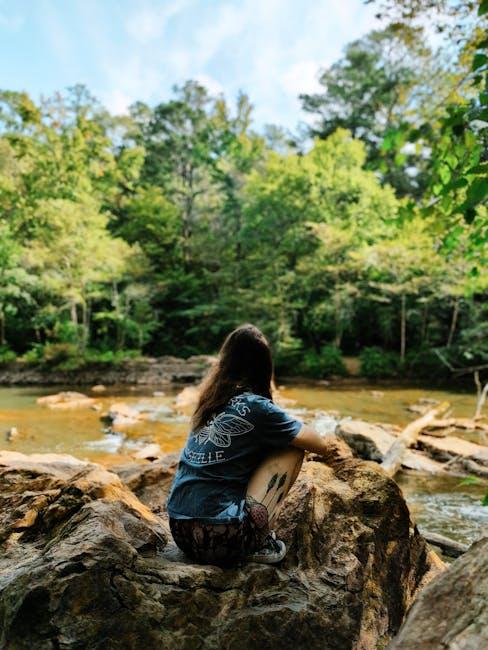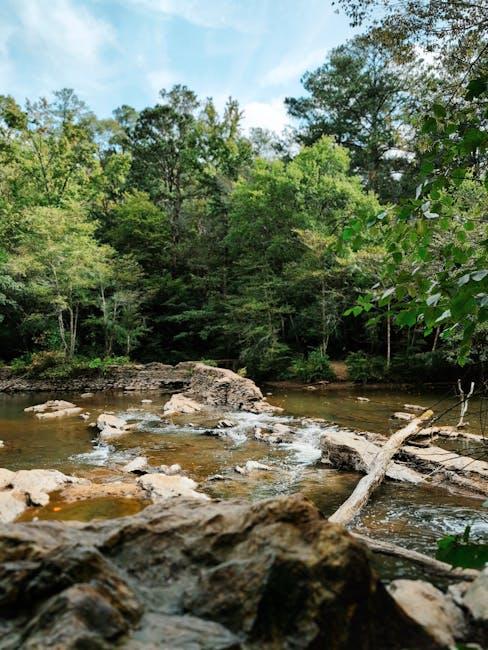In an era where urbanization and digital screens dominate daily life, the disconnect between humans and the natural world has become increasingly pronounced. Nature documentaries offer a bridge to this divide, providing viewers with a window into the wilderness and its myriad wonders. These films not only showcase the breathtaking beauty and complexity of ecosystems but also serve as a vital educational tool, raising awareness about environmental issues and the intricate balance of life on Earth. This article delves into some of the most compelling nature documentaries that enable audiences to connect with the wild, examining their unique contributions to both scientific understanding and public consciousness. Through an analytical lens, we explore how these documentaries capture the essence of nature, engage the viewer, and inspire a deeper appreciation for the planet’s diverse habitats and inhabitants.
Exploring Cinematic Journeys into the Wilderness
Embarking on a visual expedition through some of the most breathtaking landscapes on Earth, nature documentaries offer a profound connection to the untamed world. These films not only showcase the beauty of our planet but also underscore the delicate balance of ecosystems. The artful cinematography in these documentaries immerses viewers in the raw and unfiltered essence of nature, transforming screens into windows to the wild. Whether it’s the hauntingly beautiful solitude of the Arctic or the vibrant biodiversity of the Amazon rainforest, these films present a mesmerizing tapestry of life that evokes both wonder and contemplation.
- Planet Earth – A groundbreaking series that captures the vastness and intricate details of the natural world, offering a fresh perspective on the diverse habitats and the creatures that inhabit them.
- The Blue Planet – Dive into the depths of the ocean to explore the mysterious and often unseen life beneath the waves, revealing the wonders of marine biodiversity.
- Our Planet – With a focus on conservation, this documentary highlights the impact of human activity on the environment, urging viewers to reflect on their relationship with nature.
- Wild China – Journey through the lesser-known terrains of China, showcasing the country’s hidden natural treasures and the unique wildlife that thrives there.

Analyzing Storytelling Techniques in Nature Documentaries
Nature documentaries are more than just visual spectacles; they are intricately crafted narratives that use storytelling techniques to engage and educate viewers. A key technique often employed is the use of a central theme or narrative arc. This approach creates a cohesive story that guides the viewer through the complexities of ecosystems or animal behavior. For instance, a documentary might follow the journey of a single animal through its lifecycle, offering a personal perspective that fosters emotional connection.
- Character Development: By personifying animals or elements of nature, documentaries can create relatable ‘characters’ that resonate with the audience.
- Emotional Engagement: Music, narration, and visuals are strategically used to evoke emotions, whether it’s awe at a sweeping landscape or empathy for an endangered species.
- Conflict and Resolution: Many documentaries incorporate elements of conflict, such as survival challenges, which are resolved by the end, providing a satisfying narrative experience.
Additionally, visual storytelling plays a crucial role, with cinematography techniques like time-lapse, slow motion, and aerial shots being used to capture the grandeur and subtleties of the natural world. These techniques not only highlight the beauty of the environment but also underscore the urgency of conservation efforts by illustrating the impacts of human activity on fragile ecosystems.

Understanding the Impact of Visual Narratives on Audience Perception
Visual narratives in nature documentaries play a crucial role in shaping how audiences perceive the natural world. Through the use of stunning cinematography, compelling storytelling, and immersive soundscapes, these films create an emotional connection that often transcends the screen. The artistic choices made by filmmakers can evoke a range of emotions, from awe and wonder to empathy and concern for the environment. This emotional engagement can lead to a deeper understanding and appreciation of the ecosystems portrayed, encouraging viewers to reflect on their own relationship with nature.
- Storytelling Techniques: The use of narrative arcs, character development, and conflict resolution helps audiences relate to the subjects of these documentaries, whether they are following the journey of a migrating herd or the life cycle of a plant.
- Visual Aesthetics: High-definition footage and innovative filming techniques provide an intimate look at wildlife, often revealing behaviors and environments that are otherwise inaccessible to the public.
- Emotional Resonance: By creating a sensory experience that combines sight and sound, these documentaries can evoke powerful emotions that linger long after the viewing experience.

Evaluating Top Nature Documentaries for Authentic Wildlife Representation
In the realm of nature documentaries, authenticity is paramount for capturing the genuine essence of wildlife. When evaluating documentaries, several key aspects determine their success in portraying true-to-life animal behavior and ecosystems. Narrative accuracy is crucial, as misleading or anthropomorphized stories can distort viewers’ understanding of nature. A documentary that presents scientifically accurate information while maintaining an engaging storyline can effectively educate and inspire its audience.
- Cinematography: High-quality, unobtrusive filming techniques that allow animals to exhibit natural behaviors without human interference.
- Sound Design: Authentic audio recordings that enhance the immersive experience without artificially dramatizing the environment.
- Expert Involvement: Collaboration with wildlife biologists and conservationists ensures that the content reflects current scientific knowledge.
Ultimately, the best nature documentaries act as a window into the wild, offering viewers an unfiltered glimpse into the complex and often delicate balance of natural ecosystems. By prioritizing authenticity, these films foster a deeper connection and understanding between humanity and the natural world.







































